Oct
11
2016
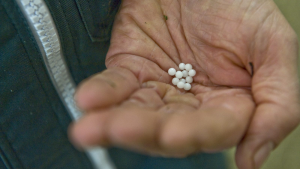 A Canadian academic, Dr. Mark Loeb, who is a respected infectious disease researcher who knows how to conduct high quality research, wants to study homeopathic nosodes. Nosodes are essentially homeopathic vaccines.
A Canadian academic, Dr. Mark Loeb, who is a respected infectious disease researcher who knows how to conduct high quality research, wants to study homeopathic nosodes. Nosodes are essentially homeopathic vaccines.
Tim Caulfield, a Canadian professor of health law and policy, thinks the study is misguided and unethical. The two are having a respectful public debate about the risks and merits of doing such a study.
David Gorski and I have actually published in the peer-reviewed literature on the broader question of studying alternative medicine: Clinical trials of integrative medicine: testing whether magic works? It is a bit of a dilemma, and we are seeing that exact dilemma play out on the question of this specific proposed study.
Homeopathy is Pseudoscience
For quick background, both sides in this debate agree that homeopathy is 100% pseudoscientific nonsense. Homeopathy was invented by one person, Samuel Hahnemann, about 200 years ago. It was not based on any scientific research or knowledge base, it did not develop out of emerging knowledge of biology or physiology. It was simply invented out of whole cloth based loosely on the superstitious belief in sympathetic magic – the notion that substances contain a mysterious “essence” that can be transferred to the body and stimulate the life force.
Continue Reading »
Oct
10
2016
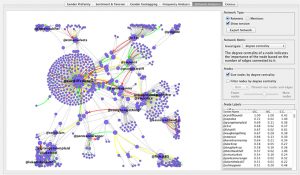 As social media changes the nature of information and communication, it is interesting to think about how information and misinformation spread through these networks. A paper from 2015 seeks to model the spread of information through social networks to better understand the effect of specific variables.
As social media changes the nature of information and communication, it is interesting to think about how information and misinformation spread through these networks. A paper from 2015 seeks to model the spread of information through social networks to better understand the effect of specific variables.
The study: Fact-checking Effect on Viral Hoaxes: A Model of Misinformation Spread in Social Networks, is not a real-world examination but a mathematical model. As with all such models, it is overly simplistic in order to isolate a few key variables. For the purpose of this model they are treating misinformation as a virus. Someone exposed to the misinformation is potentially infected. At random, they will either be gullible, believe the misinformation and spread it on, or they will be skeptical, fact check the misinformation and then spread correcting information.
In the model they can vary the percentage of people who are believers vs fact checkers. They can also vary the time it takes on average for people to forget the information and therefore become susceptible to infection again. They used a stochastic model, which means the spread of the information and whether or not an individual is a believer or fact checker was random.
They found, not surprisingly, that the greater the percentage of fact checkers, the more likely it is that the hoax will essentially be wiped out. If the percentage of fact checkers is too low then belief in the hoax can become endemic – it can persist indefinitely in the population.
Interestingly, the rate at which the misinformation spread did not matter in this model.
Continue Reading »
Oct
07
2016
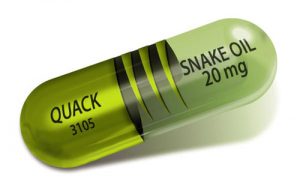 Children with autism are an especially vulnerable population. Just being a child makes you vulnerable, especially when you have any medical condition. You are in the hands of your parents, the health care system, and the state to best look after your needs.
Children with autism are an especially vulnerable population. Just being a child makes you vulnerable, especially when you have any medical condition. You are in the hands of your parents, the health care system, and the state to best look after your needs.
Unfortunately, we frequently see stories in which all three have failed to look after the needs of children (sick or not).
Another such story has surfaced: the BBC reports about a four-year old boy, recently diagnosed with autism, whose parents sought help from a naturopath. This fake doctor prescribed a dozen supplements to the boy (because that’s what they do), apparently telling the parents this would help with their son’s autism. Instead, the boy became extremely ill and would likely have died without critical intervention.
Specifically, he was given a toxic dose of vitamin D (yes, there are toxic doses of vitamins), which caused him to have dangerously high calcium levels. He developed vomiting, extreme thirst, and lost 6.5 pounds in 3 weeks. Fortunately he was treated and has recovered.
Continue Reading »
Oct
06
2016
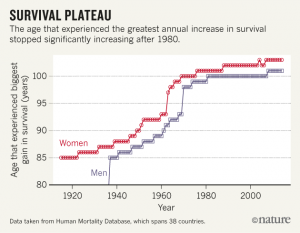 A recent study that concludes human lifespan is approaching its maximum (around 115 years) has created some interesting debate. It’s the good kind of scientific debate that focuses on how to interpret data and infer the implications of limited data.
A recent study that concludes human lifespan is approaching its maximum (around 115 years) has created some interesting debate. It’s the good kind of scientific debate that focuses on how to interpret data and infer the implications of limited data.
The authors, Dong, Milholland and Vijg, examined the mortality database, which includes death statistics from 38 countries. They looked at the age of the oldest person to die in each country by year. They also looked at the change in life-expectancy by age group.
To clarify one point of terminology that is often confused: life expectancy refers specifically to the number of years a person is statistically likely to live from their current age. Usually when you see life expectancy figures quoted, those are life expectancy from birth.
For example, a person born in 2012 in the US has a life expectancy of 78.8 years. If you were 65 in 2012 in the US your life expectancy was 84.5 (both are slightly higher for women and slightly lower for men).
Continue Reading »
Oct
04
2016
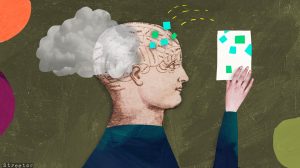 Yesterday I wrote about the literature on so-called “power poses” – the notion that adopting certain poses make you feel more confident and powerful, and therefore change your behavior in certain ways that may be advantageous. Over the last decade psychologists have built up a literature which they claim supports the conclusion that power poses work.
Yesterday I wrote about the literature on so-called “power poses” – the notion that adopting certain poses make you feel more confident and powerful, and therefore change your behavior in certain ways that may be advantageous. Over the last decade psychologists have built up a literature which they claim supports the conclusion that power poses work.
However, a reanalysis of the data suggests that the evidence is flimsy, and in fact may be entirely an illusion created by p-hacking (essentially, loose research methodology).
The primary proponent of power poses, Amy Cuddy, has already built a career on the idea, topped off with a popular TED talk, and so far is sticking by her conclusion. Meanwhile, one of her coauthors, Dana Carney, has already jumped ship and stated publicly she does not think the power pose effect is real.
Brain Training
Today I am going to tell a very similar story, this time about brain training games. Over the last decade psychologists have built up a literature which they claim supports the conclusion that playing certain “brain games” will make you smarter in general, and may even stave off dementia.
Continue Reading »
Oct
03
2016
 In 2012 psychologist Amy Cuddy gave a TED talk about “power poses.” This was the result of her recent research, which found that adopting “expansive” postures, such as standing with your hands on your hips, makes you feel more powerful, and this feeling translates into action, such as taking more risks.
In 2012 psychologist Amy Cuddy gave a TED talk about “power poses.” This was the result of her recent research, which found that adopting “expansive” postures, such as standing with your hands on your hips, makes you feel more powerful, and this feeling translates into action, such as taking more risks.
Cuddy and her coauthors are serious psychological researchers, but the result was pop-psychology and self-help gold. The self-help industry in particular loves tricks that they can argue will help people succeed at some goal. This is because the public wants the tricks – the easy shortcut that can reach a goal without all the hard work or that can give you an edge over others.
But of course we have to ask the hard question: is the effect real?
Power Poses and P-Hacking
Recently one of Cuddy’s coauthors, Dana Carney, published a statement in which she details why she no longer believes that the power pose effect is real. (There are a number of individual effects here, including internal psychological changes, behavioral changes, and outcome changes, but for brevity I will simply refer to power poses, also called expansive postures, and the power pose effect.)
Continue Reading »
 A Canadian academic, Dr. Mark Loeb, who is a respected infectious disease researcher who knows how to conduct high quality research, wants to study homeopathic nosodes. Nosodes are essentially homeopathic vaccines.
A Canadian academic, Dr. Mark Loeb, who is a respected infectious disease researcher who knows how to conduct high quality research, wants to study homeopathic nosodes. Nosodes are essentially homeopathic vaccines.
 As social media changes the nature of information and communication, it is interesting to think about how information and misinformation spread through these networks. A paper from 2015 seeks to model the spread of information through social networks to better understand the effect of specific variables.
As social media changes the nature of information and communication, it is interesting to think about how information and misinformation spread through these networks. A paper from 2015 seeks to model the spread of information through social networks to better understand the effect of specific variables. Children with autism are an especially vulnerable population. Just being a child makes you vulnerable, especially when you have any medical condition. You are in the hands of your parents, the health care system, and the state to best look after your needs.
Children with autism are an especially vulnerable population. Just being a child makes you vulnerable, especially when you have any medical condition. You are in the hands of your parents, the health care system, and the state to best look after your needs. A recent study
A recent study Yesterday I wrote about the literature
Yesterday I wrote about the literature In 2012 psychologist Amy Cuddy gave a
In 2012 psychologist Amy Cuddy gave a 




